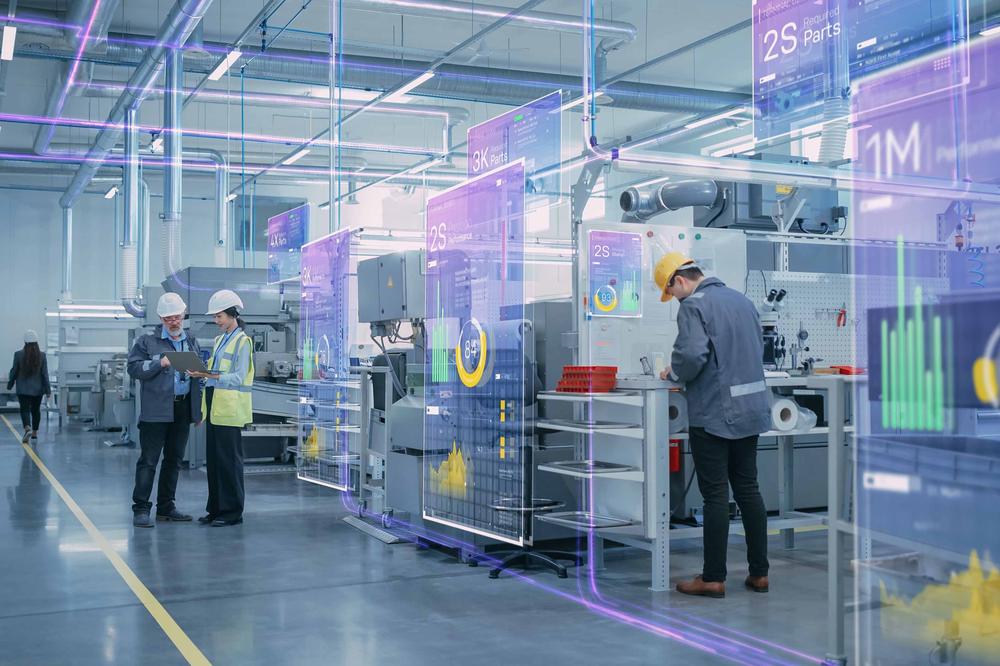
The B2B platform for the best purchasing descision. Identify and compare relevant B2B manufacturers, suppliers and retailers
Close
Filter
Result configuration
Continents
Select continent
Locations
Result types
Company type
Select company type
Industries
Select industry
Company status
Select company status preset
Number of employees
Min.
Max.
Founding year
Daedalus
Madrid, Spain
A
11-50 Employees
1998
Key takeaway
MeaningCloud is developing projects for Pfizer that involve analyzing unstructured customer feedback through their Text Classification API. This API categorizes and extracts deep insights from various content channels, enabling automated organization and enhancing decision-making processes.
Reference
Product
Text classification and categorization API | MeaningCloud
Automated text categorization is the basis of content categorization. Achieve high precision on news or social media with hybrid Text Classification API.
Classora Technologies
A Coruña, Spain
A
1-10 Employees
-
Key takeaway
Classora is a technology company that specializes in text classification and data analysis, offering leading semantic services in the Spanish digital press. They utilize scalable Big Data methodologies and advanced tools for processes like ETL and Business Intelligence, making them experts in generating insightful reports and managing KPIs.
Reference
Service
Servicios | Classora Technologies
text2data.com
Poland
B
1-10 Employees
2014
Key takeaway
The company offers advanced NLP and Machine Learning services that enhance text analysis, making it a valuable tool for text classification. Users can easily train their own entity extraction models and tag text with custom categories, streamlining the process of organizing and analyzing unstructured data.
Reference
Core business
Text Analytics & Sentiment Analysis API
Text Analytics Platform - analyze documents and get detailed reports of your unstructured data. Bring NLP and Machine Learning to your work environment.
Looking for more accurate results?
Find the right companies for free by entering your custom query!
25M+ companies
250M+ products
Free to use
Data Language
Mole Valley, United Kingdom
A
11-50 Employees
2014
Key takeaway
The company offers a state-of-the-art AI Text Classification service, leveraging their expertise in scalable data engineering and digital media knowledge. Their market-leading SaaS products enable rapid product deployment while ensuring high performance and value from core digital assets.
Reference
Product
AI Text Classification
Our Text Classification service is state-of-the-art, AI and machine learning engineering.
DataInventa
London, United Kingdom
A
1-10 Employees
2019
Key takeaway
DataInventa offers a robust Text Classification engine that efficiently categorizes text or documents into multiple categories. Additionally, their advanced NER technology enhances this capability by identifying various entities within the text.
Reference
Core business
Home Page - DataInventa
Texifter
Amherst, United States
B
1-10 Employees
2009
Key takeaway
DiscoverText offers advanced tools for text classification, allowing users to create custom machine classifiers to efficiently categorize text data by topic, sentiment, and relevance. Their cloud-based software integrates various data science methods, streamlining the analysis process for large volumes of text.
Reference
Product
Software – DiscoverText
Lexalytics
Amherst, United States
B
11-50 Employees
2003
Key takeaway
Lexalytics, an InMoment Company, offers advanced text analytics APIs that enhance products with leading NLP capabilities, making it ideal for applications like text classification. Their solutions include pre-built configurations for sentiment analysis, topic detection, and categorization, enabling effective management and analysis of unstructured text documents.
Reference
Product
Technology - Lexalytics
Prodigy
-
- Employees
-
Key takeaway
Prodigy is a powerful annotation tool that enables data scientists to efficiently create and train custom text classifiers for various tasks like intent detection and sentiment analysis. With its scriptable interface and active learning features, Prodigy supports rapid iteration and effective handling of imbalanced classes, making it an excellent choice for text classification projects.
Reference
Product
Text Classification · Prodigy · An annotation tool for AI, Machine Learning & NLP
Whether you’re doing intent detection, information extraction, semantic role labeling or sentiment analysis, Prodigy provides easy, flexible and powerful annotation options. Active learning keeps you efficient even if your classes are heavily imbalanced.

Texifter LLC
Amherst, United States
B
1-10 Employees
2009
Key takeaway
DiscoverText provides a robust suite of text mining and machine-learning tools that enable users to efficiently analyze large volumes of text data. Their platform allows for the creation of custom machine classifiers to categorize text into topics and sentiments, making it a valuable resource for text classification.
Reference
Core business
DiscoverText | Home
datanizing GmbH
Munich, Germany
A
1-10 Employees
2017
Key takeaway
Datanizing GmbH specializes in automatic data and text analysis, utilizing technologies like NLP and Topic Modeling to provide insights through automated summaries. Their expertise supports various applications, including market research and information retrieval.
Reference
Product
Text analytics solutions - datanizing GmbH
Technologies which have been searched by others and may be interesting for you:
A selection of suitable products and services provided by verified companies according to your search.

Service
Natural Language Processing
Go to product
A selection of suitable use cases for products or services provided by verified companies according to your search.

Use case
Healthcare
Healthcare, medical
Cogito Tech’ Medical AI Innovation Hub works with leading global research institutions, networks of healthcare providers, insurance firms, and technology partners specializing in data annotation tooling to deliver secure, FDA and HIPAA-compliant data solutions that boost diagnostic accuracy and accelerate AI development.

Use case
Healthcare
Healthcare, medical
Cogito Tech’ Medical AI Innovation Hub works with leading global research institutions, networks of healthcare providers, insurance firms, and technology partners specializing in data annotation tooling to deliver secure, FDA and HIPAA-compliant data solutions that boost diagnostic accuracy and accelerate AI development.
Text classification is a process in natural language processing (NLP) that involves categorizing text into predefined groups or classes. This technique is widely used in various applications, including spam detection, sentiment analysis, and topic labeling. By utilizing machine learning algorithms, text classification can automatically analyze and assign labels to new text data based on patterns learned from labeled training data. The effectiveness of text classification relies on various factors, including the quality of the training dataset and the choice of algorithms. Popular methods include supervised learning techniques, where models are trained on a labeled dataset, and unsupervised learning approaches, which identify patterns without predefined categories. This technology plays a crucial role in enhancing data organization and retrieval processes across multiple industries.
Text classification involves categorizing text into predefined labels or categories using various algorithms and models. This process typically starts with data preprocessing, where text data is cleaned and transformed into a suitable format for analysis. Techniques such as tokenization, stemming, and removal of stop words are often employed to enhance the quality of the data. Once the data is prepared, machine learning models, such as Support Vector Machines or neural networks, are trained on labeled datasets. The models learn to identify patterns and features associated with each category. After training, the model can classify new, unseen text based on the learned characteristics. Evaluation metrics like accuracy, precision, and recall are then used to assess the model's performance, ensuring it effectively classifies text into the correct categories.
1. Sentiment Analysis
Text classification is widely used in sentiment analysis to determine the emotional tone behind a body of text. This application is crucial for businesses to understand customer feedback, social media mentions, and product reviews. By categorizing sentiments as positive, negative, or neutral, companies can adjust their strategies accordingly.
2. Spam Detection
Email providers and messaging apps utilize text classification to filter out spam and harmful content. By classifying messages based on their content, these systems can effectively separate legitimate communication from unsolicited or malicious messages, enhancing user safety and experience.
3. Topic Categorization
Content management systems employ text classification to automatically categorize articles, blog posts, and other content types. This application improves content organization and helps users find relevant information quickly, thereby enhancing the overall user experience on platforms with large volumes of text.
4. Language Detection
Text classification also plays a role in identifying the language of a given text. This application is essential for translation services and multilingual platforms, allowing systems to route content to the appropriate language processing tools.
5. Document Classification
Organizations utilize text classification for document management. By categorizing documents into predefined classes, businesses can streamline their workflows, ensuring that employees can easily access the information they need without extensive searching.
1. Improved Efficiency
Text classification automates the process of organizing and analyzing large volumes of text data. This significantly reduces the time and effort required for manual categorization, allowing businesses to focus on more strategic tasks.
2. Enhanced Accuracy
By leveraging advanced algorithms and machine learning techniques, text classification provides a high level of accuracy in categorizing text. This minimizes human error and ensures that information is sorted correctly, improving overall data integrity.
3. Scalability
As organizations grow and generate more content, text classification systems can easily scale to manage increasing amounts of data. This adaptability ensures that businesses can maintain efficiency without compromising on accuracy.
4. Better Insights
Using text classification helps in extracting meaningful insights from data. By categorizing text, organizations can identify trends, customer sentiments, and areas for improvement, leading to more informed decision-making.
5. Cost-Effectiveness
Text classification reduces operational costs by automating labor-intensive processes. Businesses can save money by minimizing the need for extensive manual labor while still benefiting from accurate data analysis.
Common algorithms employed in text classification include Naive Bayes, which is effective due to its simplicity and speed, especially for large datasets. Another widely used method is Support Vector Machines (SVM), known for its ability to handle high-dimensional spaces and perform well with a clear margin of separation. Additionally, deep learning techniques, particularly Recurrent Neural Networks (RNN) and Convolutional Neural Networks (CNN), have gained traction for their capacity to capture complex patterns in textual data. Lastly, Transformer-based models, such as BERT and GPT, have revolutionized the field by enabling contextual understanding of text, leading to impressive results in various classification tasks.
Some interesting numbers and facts about your company results for Text Classification
| Country with most fitting companies | United States |
| Amount of fitting manufacturers | 6889 |
| Amount of suitable service providers | 8180 |
| Average amount of employees | 1-10 |
| Oldest suiting company | 1998 |
| Youngest suiting company | 2019 |
20%
40%
60%
80%
Some interesting questions that has been asked about the results you have just received for Text Classification
What are related technologies to Text Classification?
Based on our calculations related technologies to Text Classification are Big Data, E-Health, Retail Tech, Artificial Intelligence & Machine Learning, E-Commerce
Which industries are mostly working on Text Classification?
The most represented industries which are working in Text Classification are IT, Software and Services, Other, Marketing Services, Education, Consulting
How does ensun find these Text Classification Companies?
ensun uses an advanced search and ranking system capable of sifting through millions of companies and hundreds of millions of products and services to identify suitable matches. This is achieved by leveraging cutting-edge technologies, including Artificial Intelligence.